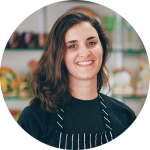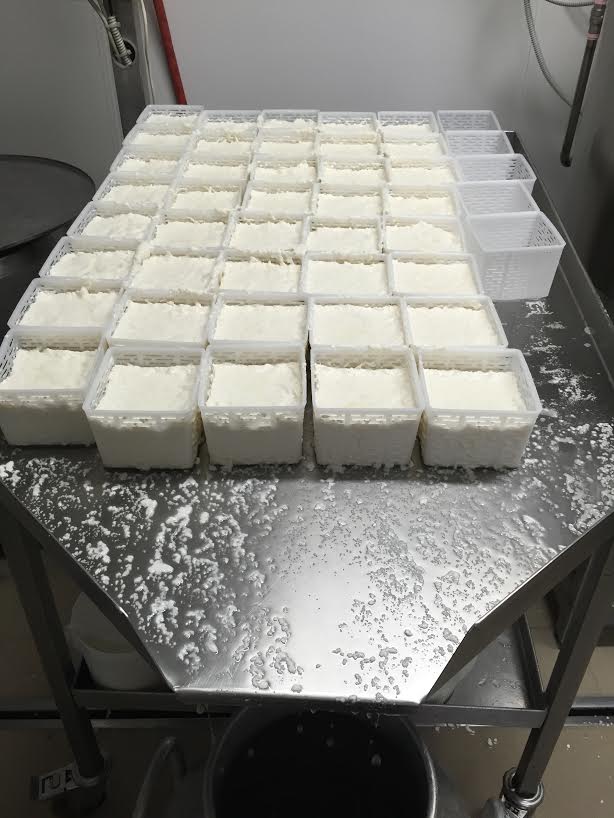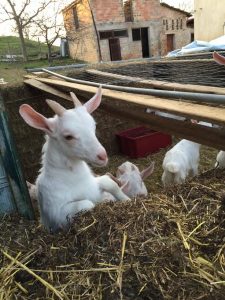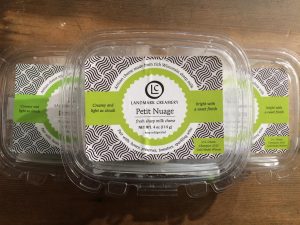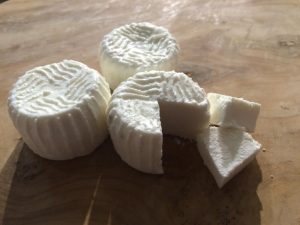Many of my customers are shocked to find out that cheese is seasonal. Yep, you read that right – cheese is a seasonal food product. “But Alice,” you might be asking yourself, “how can that be? Cheese is not like a fruit or vegetable that pops up out of the earth or suddenly materializes on a branch – how can cheese ever be “out of season”?”
The seasonality of cheese depends on two main components. The first factor is the lactation period of the animal who is providing you with the delicious milk for your cheese. Different types of animals give milk for varying amounts of time after breeding – for sheep, it’s eight months, goats clock in at about eleven months, and cows have a lactation period of about 13 months. Since animals tend to breed at the same time during the year (as opposed to farmers being able to stagger their animals breeding cycles throughout the year), this means that for a few months out of the year, cheesemakers working with goats or sheep have no fresh milk with which to make cheese.
The second component has to do with how long the cheese itself ages for. For fresh cheeses like chevre and sheep or goat’s milk ricotta (which require no aging time), this means that they are only made when fresh milk is available – usually March through about October. For cheeses that do require aging, seasonality plays a part as well, but you need to factor in the aging time to figure out when that particular cheese’s season starts and ends. For example, if you have a goats milk cheese that’s aged for three months, it’s going to stop being available at the end of the milking season plus three months. For cheeses that are aged for a much longer time, the seasonality isn’t as much of a factor and are available more or less year round.
There’s another seasonal factor in cheesemaking that has less to do with milk availability and more to do with the quality of milk produced – what type of food is available to the animals during their milking season? As we all know, we are what we eat, and there are few instances where this is as obvious as with milk. The difference between milk from an animal who has been eating lush, fresh grass and herbs during the spring and summer, and an animal who has had dried, uniform fodder during the winter is night and day. The flavor of that summer milk showcases the terroir of the region – particular combinations of wildflowers, grasses, herbs, and other greenery that the animals consume all become apparent in the milk. This nutritious summertime feed also has a positive effect on the milk’s protein and butterfat content. As such, certain farmers will only make cheese using spring and summer milk and forgo cheesemaking with inferior winter milk.
Whew! So what does all of that mean for Via Umbria’s cheese counter? Well, we’ve got a seasonal treat to showcase for our next Cheese of the Month – delicious, fresh sheep’s milk cheeses from Landmark Creamery in Wisconsin. These little one ounce buttons, named Petit Nuage, or “Little Cloud” en francais, are only made April – September, when the sheep are being milked and are munching on delicious spring and summer Wisconsin grass. Bright and citrusy with clean flavor and a distinct, sheepy tang, these little wonders are gorgeous summer treat that are great paired with heirloom tomatoes and olive oil for a simple salad, topped with fresh or grilled stone fruits like peaches or nectarines, or simply smeared on a baguette and enjoyed on their own.
Don’t miss out on this gorgeous cheese – sign up for our Cheese of the Month Club and get a half pound of Petit Nuage to enjoy during July. Swing by our next meeting, Wednesday, July 6th, and to taste and learn all about your new favorite summer cheese!
